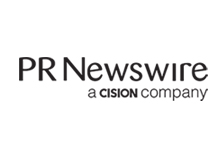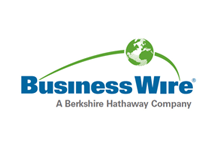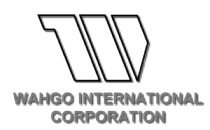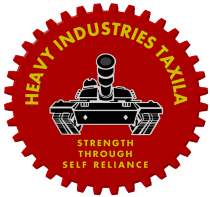Commercial Printing Market Report 2022: Machinery Design, Digitalization & Computerization Allowing Sector to Flourish - ResearchAndMarkets.com
The "Commercial Printing Market - Growth, Trends, COVID-19 Impact, and Forecasts (2022 - 2027)" report has been added to ResearchAndMarkets.com's offering.
The global commercial printing market was valued at USD 433.79 billion in 2021. It is projected to be worth USD 484.22 billion by 2027, registering a CAGR of 1.74% during the forecast period (2022-2027). The growing advertising needs of enterprises across the world and extensive technological proliferation are the key factors driving the market growth. Many organizations are adopting commercial printers as they are more cost-effective and efficient for bulk printing.
Key Highlights
- Including customized marketing messages in promotional and marketing strategies is one of the drivers of the commercial printing industry. There is a significant demand for personalized printed content, which is being catered to by commercial printing companies that use digital printing technologies. Such technologies include variable data printing (VDP), which enables the customization of images, text, and graphics on each printed piece. The short-run self-publishing industry witnesses a high demand for digital printing due to order flexibility, optimized stock handling, and minimization of time-to-market for printed content. This may also contribute to the growth of the commercial industry's spending.
- Sustainability is becoming increasingly important in businesses today. Commercial inkjet products are gaining traction as they use less power, produce less carbon dioxide, and are associated with cleaner air as they do not emit toner dust. Many companies are investing in inkjet printers to enhance their offerings, personalize packaging and messaging, aid clients in promoting their brands, and meet the seasonality of their demand. For instance, in 2021, DS Smith Iberia installed the EFI Nozomi C18000 Plus six-color single pass-LED inkjet printer in its facility in Lisbon, Portugal. The productivity of the Nozomi is expected to reduce the time to market and offer a printing quality equivalent to that of offset printing without the need for litho lamination.
- The printing industry has historically been labor-intensive, with a strong relationship between the trend in turnover and employment. Machinery design, digitalization, and computerization have significantly contributed to improving productivity and transforming this industry so that growth capacity is no longer linked to direct work. However, the rising raw material costs during the procurement process limit the operability of several players. The raw materials used in commercial printing include paper, ink, printing materials, and other chemical products. The feedstock prices are dynamic and fluctuate based on several socioeconomic factors, thereby hindering the business activity of the companies operating in the studied market. The last few years were tumultuous for the purchasing departments of ink manufacturers.
Key Market Trends
Packaging Segment Expected to Witness Significant Growth
- Folding cartons, flexible packaging, and label printing are the three packaging applications that require printing and cutting, with folding cartons adding a few more processes to the file preparation (structural CAD files) and finishing (die-cutting, folding, gluing).
- With a rise in the digital delivery of information, commercial printers have been observed to be imbibing digital technologies to enhance packaging print quality. Quick response (QR) codes have become a basic/mainstreamed print on product packaging to be scanned with a smartphone for additional display of data, such as product info and promotional content.
- Additionally, the demand for printing from packaging and labels for pharmaceuticals, tobacco products, and alcoholic beverages is expected to increase, as the companies must comply with dynamic government regulations and protect against counterfeiting.
- Increased cooperation among the convertors and retailers surrounding packaging has led to the development of innovative ways of customer enticement. Online shopping and curating personalized experiences have further aided the market for commercial printing in the packaging domain. Owing to this, many packaging companies are investing in commercial printing solutions, thus boosting the market's growth.
- Furthermore, the booming e-commerce market across the world offers a lucrative opportunity for commercial printing providers, as e-commerce players rapidly adopt innovative printing solutions for their daily packaging. As e-commerce grows, its relative share of brick-and-mortar retail sales, the allied stakeholders, from logistics to warehousing to retail brands, have begun to invest in technologies unique to the specific needs of e-commerce.
- Such developments in innovative and sustainable printing offer a promising future for commercial printing in the packaging industry. In addition, the growing number of investments, mergers, and collaboration activities among commercial printing and packaging providers may enhance the product offerings and cater to a higher level of demand, thereby boosting the growth of the studied market.
Key Topics Covered:
1 INTRODUCTION
2 RESEARCH METHODOLOGY
3 EXECUTIVE SUMMARY
4 MARKET INSIGHTS
5 MARKET DYNAMICS
6 MARKET SEGMENTATION
7 COMPETITIVE LANDSCAPE
8 INVESTMENT ANALYSIS
9 MARKET OUTLOOK
Companies Mentioned
- ACME Printing
- Cenveo Corporation
- R.R. Donnelley & Sons
- Vistaprint (CIM PRESS PLC)
- Toppan Co Limited
- Transcontinental Inc.
- LSC Communications US LLC
For more information about this report visit https://www.researchandmarkets.com/r/9ec50n
View source version on businesswire.com: https://www.businesswire.com/news/home/20221031005380/en/





